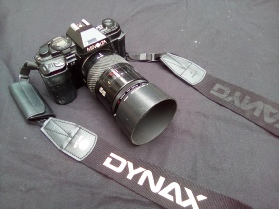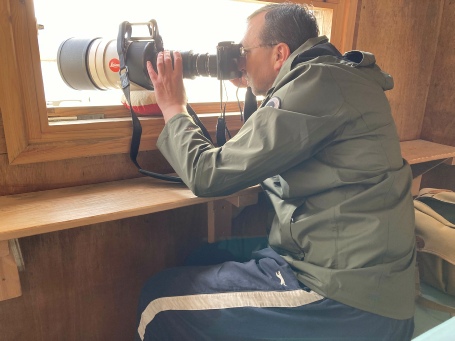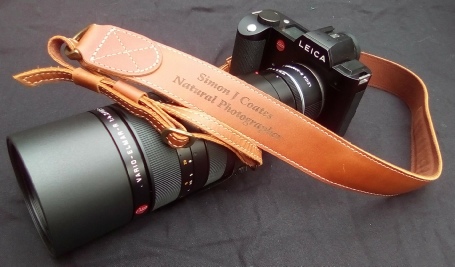





Home
Photo
album
About
Equipment
notes
In this section I will detail some of the cameras and systems I have used over the years. If you are not really interested in the technical side of photography, then please skip this bit and go and have a look at my album section; however if you are the sort of person who knows their fisheye lens from their tripod, then I think you will find it interesting and you might even resonate with some of the things I say, in terms of the general process of deciding what gear to go for. We’ve all been there!
Early years
It would be around the mid-
Back on planet real world, of course, such a setup was a far off dream. Instead,
I satisfied my photographic passion by borrowing my fathers’ Ricoh 35mm compact camera;
and eventually, saved up enough money to buy my first camera, a Minolta FS-
For those who are not too familiar with what compact cameras were like in the 1980s,
they were a bit like what modern mobile phone cameras are today. You see something
that you want to take a photo of, point the camera at it, press the button, and hey
presto, a photo -
Achieving the dream
So, I did what any teenager would do -
However, it was towards the end of the 1990s when I realised that although the Minolta system was excellent in many ways, with the sort of photography I was doing, I began to think I might be better served with something else. I was using manual control more and more, so the autofocus and automatic exposure modes were becoming less and less used. Also, I was aware that there were systems out there that were of higher quality overall. Not that there was anything substandard with the Minolta gear; it was just that there were systems that would suit my photographic creativity better. As an example, the Minolta 9000 and 7000 were essentially autofocus cameras, they of course had a manual focus option; however, because the lenses were designed as autofocus lenses, the manual focus ring was quite narrow and not really designed to be used that often. A manual focus camera would have a wider and nicer dampened focus ring for better manual focusing.
Catching the Red Dot Fever
So, I started to look around for something else. One camera that seemed to tick all
the boxes was the Nikon FM2. A manual-
When people think of Leica, they will picture a rangefinder -
in 1999, I took the plunge and got an R6.2 and a number of R lenses, and from that
point on, never looked back. I found that I never really missed autofocus, and generally
I found the camera easier to use than an automatic, which sounds really paradoxical,
but when you are trying to create the best photo you can, having complete control
of the picture taking process makes it much easier to get the shot you want. I used
this camera setup for the next fifteen-

In a hide in the Leighton Moss RSPB nature reserve in Cumbria, with the massive 400mm
f/2.8 lens, resting on a home-

Leica SL with adapter and R lens attached, a combination that works really well.
Camera strap (or more accurately, lens strap -
Circumstances outside of my control
So we are now in the min-
The spark returns
Happily, I regained the photo bug in 2023. After a break of seven years, I wanted to get back to taking photos. The first thing of course was to decide what sort of camera I was going to use. It was clearly going to be digital. I definitely wanted to keep using the truly magnificent Leica R lenses, so I was on the hunt for a digital camera body to take these lenses.
The ideal solution would have been a Leica R digital camera body; sadly, no such
thing existed, and indeed Leica had discontinued everything to do with the R system
some years before, and they had never developed one. However, they had made a rather
intriguing item that looked promising; a unit that would fit onto a Leica R8 or R9
camera body that would convert these film cameras into a digital camera called the
Digital Modul-
The eventual solution
So, it was back to the drawing board. After looking at a number of cameras, it became likely that the solution would be a camera body and an adapter to allow the use of the Leica R lenses. The camera I went for in the end was in many ways quite an obvious choice. In 2015 Leica had introduced the SL, which was their digital mirrorless camera, and I discovered that they had recently introduced an adapter to allow R lenses onto SL camera bodies, and in an instant the solution was there. So, in early 2024 I got an SL (typ 601) and an R to L adapter, and I went digital.
The SL is actually a truly fantastic camera. Compared to the R6.2 it is light years ahead in terms of specification, but solid build quality and general ergonomics are top standard and feel very familiar. With the adapter working flawlessly, it feels very much like a digital R camera rather than a camera that was designed from the ground up as a totally different system. It does have aperture priority automatic exposure mode, which I will admit can be useful at times!
So, that is my current setup -

One of my Leica R6.2 camera bodies; a fully mechanical camera. I had two bodies; on both, I replaced the battery for the first time after 20 years of use!